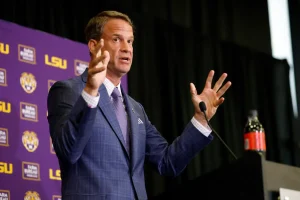The Ageism Crisis: A Looming Threat and the Urgent Need for a Workforce Revolution
The global workforce is aging at an unprecedented rate, presenting both challenges and immense opportunities for businesses and economies. However, instead of harnessing the wealth of experience and knowledge older workers offer, societies are grappling with pervasive ageism, a deeply ingrained prejudice that marginalizes and devalues individuals based solely on their age. This insidious bias manifests in various forms, from blatant discrimination in hiring and promotion practices to subtle yet damaging stereotypes that portray older workers as technologically inept, resistant to change, or less productive. The consequences of this ageism crisis are far-reaching, impacting not only individual livelihoods and well-being but also the overall health and prosperity of nations. Left unchecked, age discrimination threatens to exacerbate labor shortages, stifle innovation, and undermine economic growth. The time for a workforce revolution is now, a transformation driven by inclusive policies, innovative approaches to talent management, and a fundamental shift in societal attitudes towards aging.
One of the most concerning manifestations of ageism is the prevalence of discriminatory hiring practices. Despite possessing valuable skills and experience, older job seekers often encounter significant barriers to employment. They are frequently overlooked in favor of younger candidates, dismissed as "overqualified" or deemed too expensive. This blatant discrimination not only deprives individuals of economic opportunities and robs them of their sense of purpose but also deprives organizations of the unique contributions older workers bring. The vast institutional knowledge, strong work ethic, and well-developed interpersonal skills possessed by seasoned professionals are invaluable assets that can significantly enhance organizational performance and foster intergenerational collaboration. Furthermore, the exclusion of older workers contributes to a shrinking talent pool, particularly in sectors experiencing skills shortages, hindering economic growth and innovation.
Beyond hiring practices, ageism permeates workplaces in various subtle yet impactful ways. Stereotypes about older workers being resistant to change or unable to learn new technologies are frequently used to justify their exclusion from training opportunities, promotions, and leadership roles. This not only limits their career progression but also creates a toxic work environment where older employees feel undervalued and demotivated. The pervasive nature of these stereotypes also perpetuates a self-fulfilling prophecy, discouraging older workers from pursuing professional development opportunities and further entrenching the perception of their obsolescence. Combating these harmful stereotypes requires a concerted effort from organizations to foster a culture of lifelong learning, provide inclusive training programs, and actively promote intergenerational mentorship and knowledge transfer.
The economic consequences of ageism are staggering. The exclusion of older workers from the workforce results in a significant loss of human capital and productivity. As populations age, economies face shrinking labor forces and increased dependency ratios, placing a strain on social security systems and healthcare resources. Moreover, the failure to fully utilize the skills and experience of older workers hinders innovation and economic growth. Their extensive professional networks, deep understanding of industry trends, and ability to mentor younger colleagues are valuable assets that can drive innovation and boost productivity. Embracing the contributions of older workers is not just a matter of social justice; it’s an economic imperative.
To address the ageism crisis and unlock the full potential of an aging workforce, a comprehensive and multifaceted approach is required. Governments must play a critical role in enacting and enforcing anti-discrimination legislation, promoting age-friendly employment policies, and providing incentives for businesses to hire and retain older workers. Organizations must overhaul their recruitment and promotion practices to ensure fairness and inclusivity, invest in training programs that cater to the needs of older employees, and create flexible work arrangements that accommodate their diverse needs and preferences. Furthermore, fostering a culture of intergenerational collaboration and mentorship is crucial for breaking down stereotypes, facilitating knowledge transfer, and creating a more inclusive and productive work environment.
Ultimately, tackling ageism requires a fundamental shift in societal attitudes towards aging. We must move away from viewing aging as a decline towards irrelevance and embrace it as a process of continued growth and contribution. This requires challenging ageist stereotypes in the media and popular culture, promoting positive portrayals of older adults, and celebrating the value of lifelong learning and experience. By cultivating a society that values and respects individuals of all ages, we can unlock the immense potential of an aging workforce and create a more inclusive, prosperous, and equitable future for all. Embracing the diverse talents and perspectives of older workers is not only a matter of fairness but a strategic imperative for navigating the demographic shifts of the 21st century and building a more resilient and vibrant global economy. The workforce revolution is upon us, and its success hinges on our ability to dismantle ageism and embrace the power of an intergenerational workforce.












